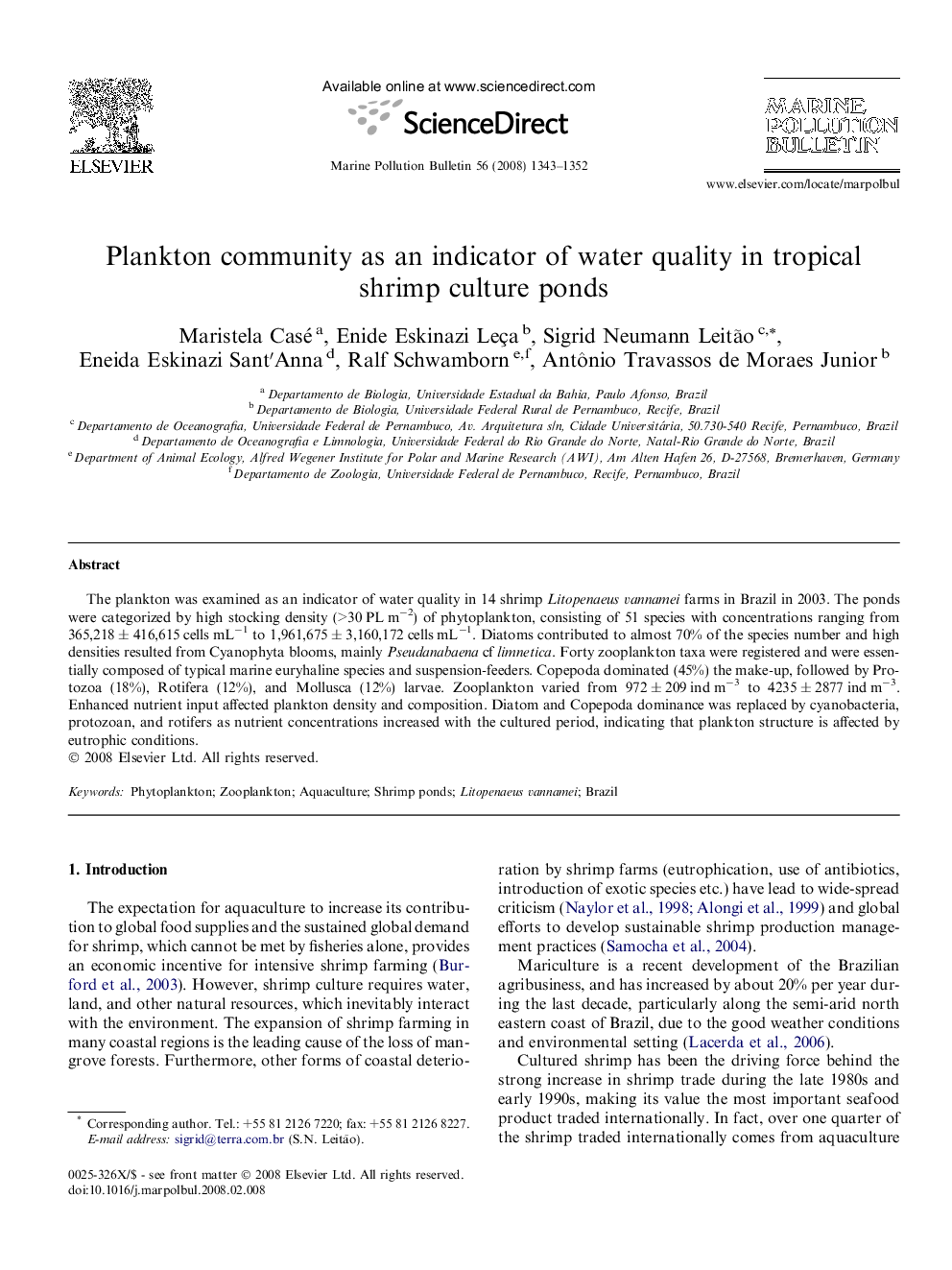| Article ID | Journal | Published Year | Pages | File Type |
|---|---|---|---|---|
| 4477500 | Marine Pollution Bulletin | 2008 | 10 Pages |
Abstract
The plankton was examined as an indicator of water quality in 14 shrimp Litopenaeus vannamei farms in Brazil in 2003. The ponds were categorized by high stocking density (>30 PL mâ2) of phytoplankton, consisting of 51 species with concentrations ranging from 365,218 ± 416,615 cells mLâ1 to 1,961,675 ± 3,160,172 cells mLâ1. Diatoms contributed to almost 70% of the species number and high densities resulted from Cyanophyta blooms, mainly Pseudanabaena cf limnetica. Forty zooplankton taxa were registered and were essentially composed of typical marine euryhaline species and suspension-feeders. Copepoda dominated (45%) the make-up, followed by Protozoa (18%), Rotifera (12%), and Mollusca (12%) larvae. Zooplankton varied from 972 ± 209 ind mâ3 to 4235 ± 2877 ind mâ3. Enhanced nutrient input affected plankton density and composition. Diatom and Copepoda dominance was replaced by cyanobacteria, protozoan, and rotifers as nutrient concentrations increased with the cultured period, indicating that plankton structure is affected by eutrophic conditions.
Related Topics
Physical Sciences and Engineering
Earth and Planetary Sciences
Oceanography
Authors
Maristela Casé, Enide Eskinazi Leça, Sigrid Neumann Leitão, Eneida Eskinazi Santâ²Anna, Ralf Schwamborn, Antônio Travassos de Moraes Junior,
